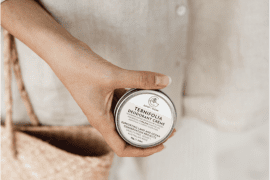By Rebecca Eadie
Breathing techniques can be used as an extremely effective tool to reduce stress and improve overall wellbeing. Admittedly, using my breath to reduce stress was not something I previously gave much consideration to. It wasn’t until I found myself in a new life stage, pregnant with my second baby and mum to a toddler, that I decided to open my mind to exploring different ways to decrease stress. Especially since I knew that the birth of my daughter and postpartum were looming – I remembered from my first baby that this could be a period of great joy but also a time where my usual coping mechanisms such as exercise, restful sleep and catching up with friends would be borderline impossible. That exploration led me to Calmbirth antenatal classes, yoga, acupuncture, and meditation. The common theme that seemed to run in some way throughout all these modalities and left me feeling calm and at ease was working with the breath.
Breathing techniques can be used as an extremely effective tool to reduce stress and improve overall wellbeing.
Imposing rhythms on the breath to reduce stress in the mind and body is something that has already been mastered and taught by many practitioners throughout history, and in more current times through practices such as yoga, osteopathy, hypnotherapy and integrative medicine. Not only is this “intervention” free, but it is becoming increasingly recognised as a skill that has real measurable results, which may explain why breathing techniques are being taught in schools, through children’s bedtime relaxations, as part of antenatal classes, and through apps and programs designed specifically to reduce stress. In a recent study by Leutenegger et al (2022) summarised by Dr Sara Wickham, the conclusions state that “women who attended antenatal education class with breathing and relaxation techniques appear to benefit from the intervention”, further going on to explain that during labour, women experienced “increased self-confidence and self-efficacy, and an increased feeling of being in control”.
Imposing rhythms on the breath to reduce stress in the mind and body is something that has already been mastered and taught by many practitioners throughout history, and in more current times through practices such as yoga, osteopathy, hypnotherapy and integrative medicine.
So how does it work? To gain a deeper understanding of how changing the breath can alter the physiological function of the body, I recently read “Breath: The new science of a lost art” by James Nestor. Nestor explains that breathing is the basic building block to all health, yet most people do not think about it when considering their overall wellbeing. He notes that, when you slow down your breath, you are sending signals to your brain that you are in a calm state, so the brain and body respond accordingly.
Breathing techniques are not meant to take the place of counselling, medications and other important strategies when dealing with stress, but rather they become a powerful tool to add to your toolbox. There are so many applications for conscious breath techniques in everyday life. Start by going to a yoga class, or download a meditation app. If you are pregnant, look at antenatal education, which includes breathing techniques and guided relaxation, not only will this assist you in labour and birth, but it continues to be useful as you face inevitable parenting hurdles. Most importantly, practise and enjoy!
Bec Eadie is a Midwife, Calmbirth Educator and Prenatal Yoga Instructor. For more parenting, pregnancy and birth related articles see her Birthing Energy website blog. You can also connect with her on Facebook and Instagram.











